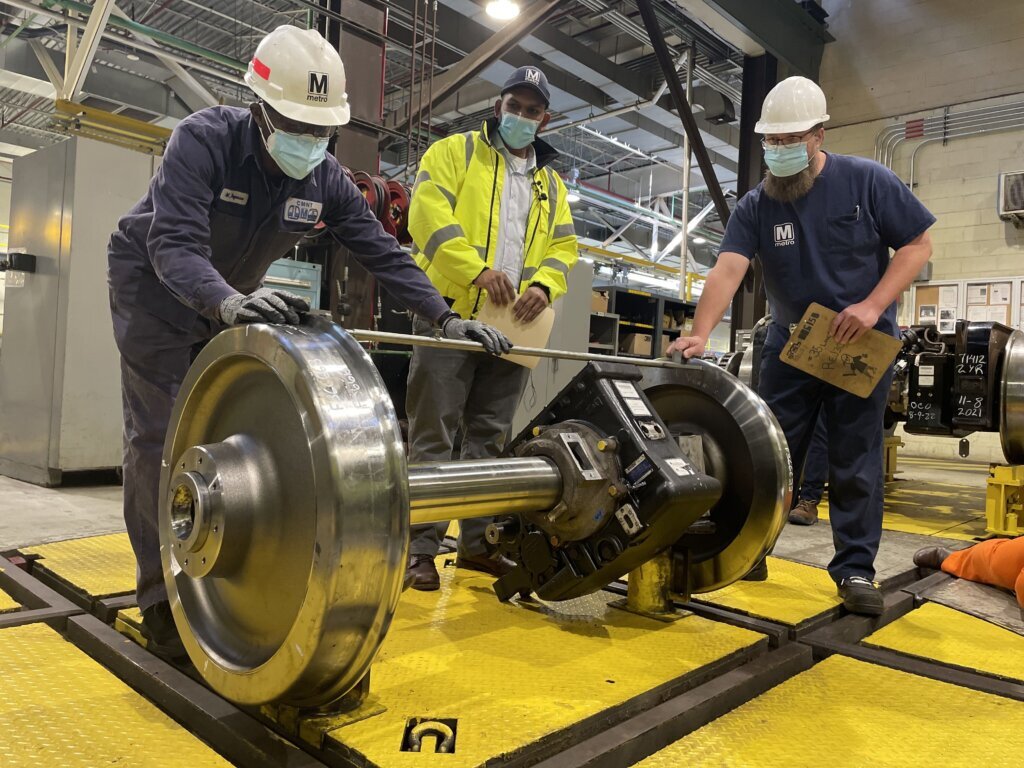The Washington Metrorail Safety Commission on Tuesday expanded on the preliminary report released by the National Transportation Safety Board last week on the Oct. 12 Blue line derailment.
Members said the wheel separation issue that caused the derailment was wider spread and went further back than previously known.
The NTSB report had revealed that the wheelset problem that causes wheels on the 7000 series cars to move outward on the axle was a major cause for the derailment.
As a part of the investigation, Metro revealed that train 407 had derailed two times on the Blue line earlier in the day of Oct. 12, before the incident that led to the 7000 series being taken out of service.
After the Blue Line train came to rest between the Rosslyn and Arlington National Cemetery stations, the train operator told the control center that he believed there was a stuck brake, according to the NTSB.
The report said a rail controller then told the operator to try to move the train, which wasn’t possible. The derailed axle was noticed after a supervisor arrived on scene.
The NTSB has also issued a safety report to subway systems and commuter railways nationwide based upon its findings.

Metro also disclosed the issue of wheel separation on the axle had been detected in the 7000 series models at least 20 times between fall 2020 and September 2021. One instance involving a 6000 series train had also been recorded.
These previous detections are in addition to 20 other cars that failed safety checks after the Oct. 12 derailment.
The commission also stated Metro knew of wheel measurement failures as far back as 2017, but had not shared that information with the commission.
Last week’s preliminary report from NTSB involved interviews with Metro employees and safety officials throughout the system.
The investigation into the 7000 series is expected to continue for several months, and future interviews with staff and technical inspections will be revised based on the new information.
A bulk of Tuesday’s meeting was spent reviewing recently-completed individual safety investigation reports from 2021. Some of the incidents reviewed included: near misses between trains and work crews; runaway Roadway Maintenance Machine (RMM) at Southern Avenue Station; evacuation at L’Enfant station due to smoke; operator fatigue leading to a Red Signal overrun at Largo Town Center; and smoke bombs on a train at Metro Center during the July 4 holiday.
You can find WMSC’s adopted 2021 safety reports online.
In between reports, the commission debated the need to improve emergency and security readiness in the Metro system. While some felt criminal activity was too infrequent to mandate more employee training, others emphasized Metro staff need to be prepared for anything at all times.”
“A mundane or innocuous event can easily devolve into one that costs further injury and further fatalities if the response to that simple event is not coordinated and effective,” said Sharmila Samarasinghe, chief operating officer for the commission
“Given COVID considerations and the environment of shared airspace within trains, it is imperative that emergency response works like clockwork. And that is why full drills are conducted — so that everybody knows who has a part to play, knows what their part is.”
The next meeting of commissioners is scheduled for Jan. 25, 2022.
WTOP’s Shayna Estulin and John Aaron contributed to this report.








